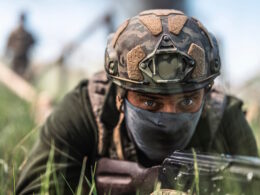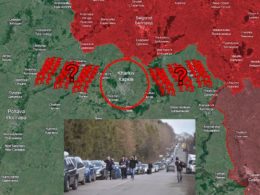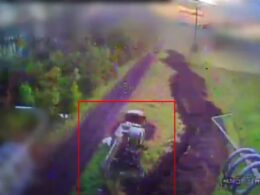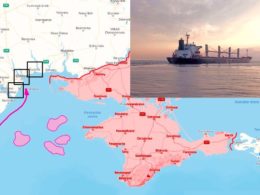Day 809: 12 May
On 12 May, there are a lot of updates from the Kharkiv direction. Here, Russians started a new offensive operation to push back Ukrainians by up to twenty kilometers from the border and set the ground for further operations aimed at Kharkiv, the second-largest city in Ukraine.

For this ambitious effort, Russians allocated fifty thousand troops, four hundred tanks, nine hundred and thirty armored vehicles, and nine hundred artillery pieces. Russians have been building up forces in this area for a long time and have attempted to conceal their troop movements in order not to draw suspicion.
However, it was soon realized that Russians were deploying their troops and heavy equipment by railways to isolated parts of the Kursk Oblast, only for Russian units to march to their deployment points in the Belgorod Oblast. To further reinforce the Northern Grouping of Forces, Russians also redeployed units from Kupiansk to support the Kharkiv offensive.
Russians had been preparing for this operation for a while with severe missile strikes on the energy infrastructure in Kharkiv, destroying a very significant part of it and causing an energy deficit in the whole oblast. Russians also targeted Ukrainian forces’ concentrations, equipment, and command posts in Kharkiv, which shows that Russians were preparing for an offensive operation.
Ukrainians knew this and prepared a network of mighty fortifications to halt any Russian attack in the direction of Kharkiv or north of Kupiansk. Ukrainian military intelligence even predicted the approximate start of the Russian offensive around the middle of May.
Only thirty-two thousand soldiers are deployed in the Belgorod Oblast for an offensive on Kharkiv, while ten thousand are in the Kursk and eight thousand in the Bryansk Oblast.
The Commander of this Northern Grouping of Forces is General Alexander Lapin, who has an abysmal reputation in the Russian army for two significant defeats precisely in the Kharkiv Oblast during past Ukrainian counteroffensive operations.
Before the start of ground assaults, Russians initiated an intense barrage of artillery and rocket systems as well as glide bombs deployed by the Russian Air Force. The goal was to suppress Ukrainian firing positions and soften their defenses along the border before the ground operations started.

On top of that, Russians are trying to make the deployment of reinforcements and supplies difficult for Ukrainians by destroying two significant bridges in Zybine and Stariy Saltiv.
As a result of such severe shelling and bombardment, tremendous damage was inflicted on Ukrainian settlements at the border. Most of the town of Vovchansk was destroyed overnight due to the intense bombardment.
The offensive effort is divided into two axes, one towards the village of Lyptsi and the other towards Vovchansk.

In the Lyptsi direction, Russians deployed small assault groups across the border to secure the nearby border settlements for further advances. Russian forces managed to advance up to four kilometers across the border and initiated engagements near the villages of Strylechna, Pilna, Krasne, and Borysivka.
Even though Russian sources reported that these villages were captured, it is essential to note that they were and continue to be in the grey zone – maintaining a permanent presence in them is problematic and entails inevitable destruction.

Meanwhile, in the direction of Vovchansk, the situation is much more complicated for the Russians because it is a town of seventeen thousand people.

Vovchansk is just five kilometers away from the border. In contrast, the immediate border settlements of Pletenivka, Ohirtseve, and Hatyshche are sites of fighting places very close to Russian positions. By the looks of it, with the destruction of a bridge in nearby Zybine, Russians strive to reduce supplies to Vovchansk, likely in an attempt to weaken Ukrainian defenses for an easier takeover of the town.

However, Vovchansk is approximately the same size as Chasiv Yar and Krasnohorivka, both sites of intense battles in Donbas, where Russians allocate tens of thousands of troops for such urban fighting.
Russian forces in Kharkiv do not have that many troops, so unless they redeploy more, they will not be able to take Vovchansk and progress beyond tiny border settlements.
As a result of dense concentrations of Russian forces during the offensive, they quickly became targets of drone operators of the forty-second mechanized brigade. This is because Ukrainian military intelligence warned the military, which deployed these drone operators that had proved their effectiveness and efficiency in the Bakhmut direction.
A Russian column of four BMPs and a truck was ambushed and destroyed right after crossing the border. Graphic footage shows that the ambushes were so severe that Russian soldiers finished themselves off with grenades when they realized that help was not coming.
There were multiple waves of attacks, one after the other, as new batches of soldiers and equipment were detected and destroyed precisely at the same place where the prior column was damaged. Russians made the mistake of concentrating several armored vehicles in one place, making them priority targets. Russians also made the mistake of parking their BMPs in vast open areas, likely because they thought there would be no resistance.
Still, Ukrainian drone operators were actively working in the area. Russian soldiers were confident enough in the safety of Kharkiv's direction that they drove on unprotected roofs of their BMPs, which had only made it easier for Ukrainian drone operators to destroy them.
Until recently, the same forty-second mechanized brigade that conducted these strikes was near Bakhmut, implying that the Russian offensive fixed some Ukrainian forces.
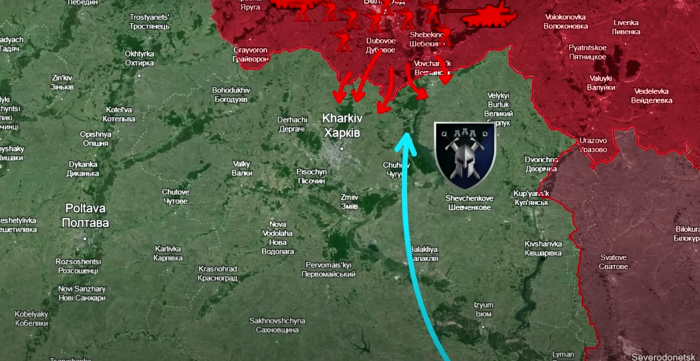
The alleged Russian goal is to seize the city of Kharkiv; however, this is impossible with only thirty-two thousand troops. Kharkiv is the second largest city in Ukraine, covering an area of one hundred and forty square kilometers and a population of one point four million people. It is thirteen times larger than Bakhmut by size and twenty times by urban population, and Russian sources said that for a takeover of Kharkiv, they would need at least three hundred thousand troops.
Russian sources also stated they plan to see the small offensive force assigned to the Kharkiv Oblast to set up a twenty-kilometer-deep buffer zone. The purpose of this buffer zone is to push Ukrainian artillery far from the border so that military targets in Belgorod are out of their firing range.
This would be extremely difficult due to solid fortifications built by Ukrainians for which Russians would again need to allocate much more forces to Kharkiv's direction. The only logical goal of Russians under current circumstances and forces available is to draw and fix Ukrainian forces away from the most intense battles in Donbas so that Russians could try to exploit breakthroughs there.
So far, no such redeployments are taking place, as Ukrainians are successfully preventing Russians from achieving even tactically significant territorial gains.
In our daily frontline report, we pair up with the military blogger Reporting from Ukraine to keep you informed about what is happening on the battlefield in the Russo-Ukrainian war.
Read also:


